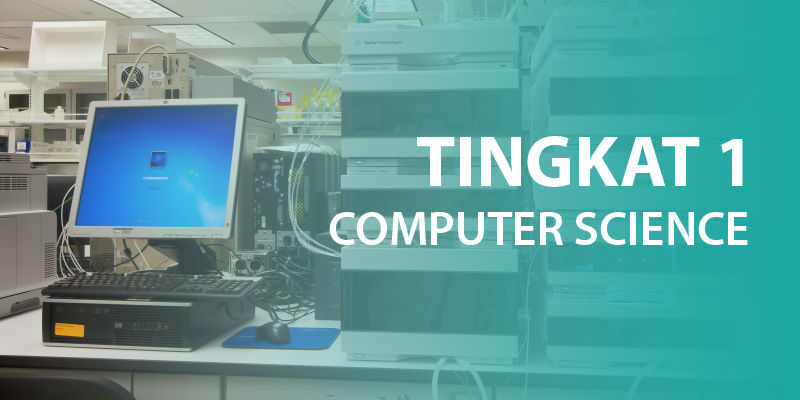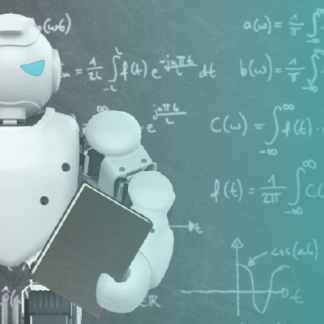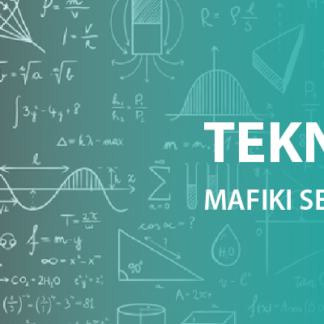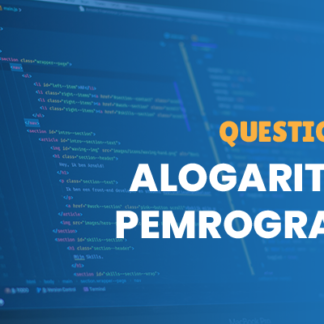Deskripsi
Kalkulus I
Subject:
- Set: definition, algebraic operation, properties.
- The system of real numbers: properties, inequality, absolute value.
- Functions (one variable): understanding, algebraic operations, composition functions, inverse functions. Coordinate system and function graph.
- Limit: understanding and properties, unidirectional limits, unlimited limits, natural numbers.
- Continuity: understanding and the nature of continuity.
- Derivatives: definition, traits, derivatives of compositional functions, inverse function derivatives, derivative function parameters, trigonometric function derivatives, cyclometric functions, hyperbolic functions, exponential functions, logarithmic functions, implicit function derivatives, logarithmic decreases, high-level derivatives . Geometrical / physical definition of the derivative.
- Differential
- Application of derivatives: maximum / minimum, up / down, convex / concave, stationary point, extreme function and extreme problems in everyday life.
- Taylor / Mac Laurin series and its app.
Fisika Dasar I
- Measurement and Magnitude of Physics
- Kinematics
- Dynamics I: The Concept of Style
- Dynamics II: Business and Energy, Many Particle Systems
- Dynamics of Stringent I: Torka and Moments of Inertia
- Dynamic Strength II: Equilibrium of Rotation and Translations, Gravity, Fluid, Vibration, Waves
- Temperature, Heat and Law of Thermodynamics I,
- Entropy and the Law of Thermodynamics II
Kimia Dasar I
- Introduction, Molecules, Ions and Chemical Formulas, Chemical Reactions;
- Reactions in solution, Energy changes in chemical reactions;
- Atomic Structure, Periodic Table;
- Ionic Bond vs. Covalent bonding, Molecular Geometry and Covalent Bonding Model
Programming I
- Understanding and components of computer programs, algorithms, data structures and programming languages (1 week).
- Stages of problem solving, structured programming concepts and presentation techniques algorithm (1 week).
- Simple algorithm on single data, case study of prime checking, determining FPB & KPK and conversion of number system (2 weeks).
- Introduction Data Structure and Language Programming C ++, Input / Output Statement Identifier / Identifier, Data Types, Operators (1 week).
- Algorithm Structure / Computer Program, Runtunan, control statements Branching (repetition), nestednya (1 week,).
- Data type array, Introduction and array declaration, Accessing data on array, Working with many arrays, 2D Matrices / arrays. Data type array (2 weeks).
- Data record / struct type, Declaration struct, Access data record / struct (1 week).
- Modular Programming / Subprogramming, Definition of subprogram / function, global and local variables, Formal and actual parameters, Recursive Definition, Recursive Subprogram (2 weeks).
- Sorting and Searching, Methods of sorting data (isertion sort, selection sort, bubble sort, merge sort, quick sort), data search algorithm (linear search, binary search) (2 weeks).
- Data type Pointer, dynamic data structure, pointer declaration, Use of pointer on linked list (1 week).
Kalkulus II
- Indefinite integral: understanding, properties, integrating techniques.
- Specific Integral: understanding, properties, Fundamental Theory of Calculus, changing variables. Integral is not fair.
- Some examples of specific integral applications: flat area, rotary volume, arc length, swirl area, center of mass / center, Pappus-Guldin Theorem, moment of inertia, Parallel Axis Theorem.
Aljabar Linear Elementer
Systems of linear equations and solutions, Gauss-Jordan Elimination (Elementary Line Operations), matrix and matrix operations, matrix ratios, matrix operation properties; Inverse matrix, elementary matrix and inverse search method matrix; Types of matrices, Determinants: counting determinants using line reduction, Determinant Properties, Cofactor Expansion, Cramer Rules. Vectors in the Euclid Chamber, vector operation, norm, distance of two vectors, point product, projection, cross product in R3; The linear transformation of the Euclid Space, the properties of linear transformations; Subspaces, linear combinations, linearly independent, linearly independent, vector builders, bases, dimensions, eigenvalues, eigenvectors, characteristic spaces, diagonalizations.
Programming II
Matematika Diskret
- Technique of proof (proposition, verification with axiom, counterexample, evidence with contradiction, evidence with case analysis, principle of well-ordering) (1 week).
- Set, line, and function (Venn diagram, set operations, cartesian product, power set, cardinality, line, formation of sequences, types of functions, inverse functions, composition, sequence, sum) (1 week) .
- Math induction (simple induction, induction steps, strong induction) (1 week).
- Introduction to number theory (partition, major alliance factor, fundamental theorem of number theory, modular arithmetic, arithmetic in any modulus, eg number theory application on RSA cryptographic algorithm) (2 weeks).
- Graph (introduction to graph theory, non-directional graph, isomorphism, connectedness to graph, staining on graph, planar graph, Hall’s Marriage Theorem, tree, tracing tree, spanning tree, directed graph and its properties, acyclic directed graph, topological sorting, Lemma Dilworth) (2 weeks).
- Relation and partial order (binary relation, relationship between binary and function relation, equivalence relation, partition, binary relation and directed graph) (1 week).
- Summation, multiplication and asymptotics (sum and its solution forms, geometric sequences, geometric sums, infinite geometric sums, integral methods, use of integral methods to find closed-form shapes, double sums, Stirling approaches, and asymptotics notation and its use) (2 weeks).
- Recurrence (common form, Towers of Hanoi, formation and completion of recurrence (merge sort), linear recurrence form, divide-and-conquer recurrence form) (2 weeks).
- Algebraic system (associative, semi-group, monoid, inverse, group, abelian, subgroup, cyclic group, koset, permutation group, burnside, ring, integral domain, field, finite field) (2 weeks) .





Ulasan
Belum ada ulasan.